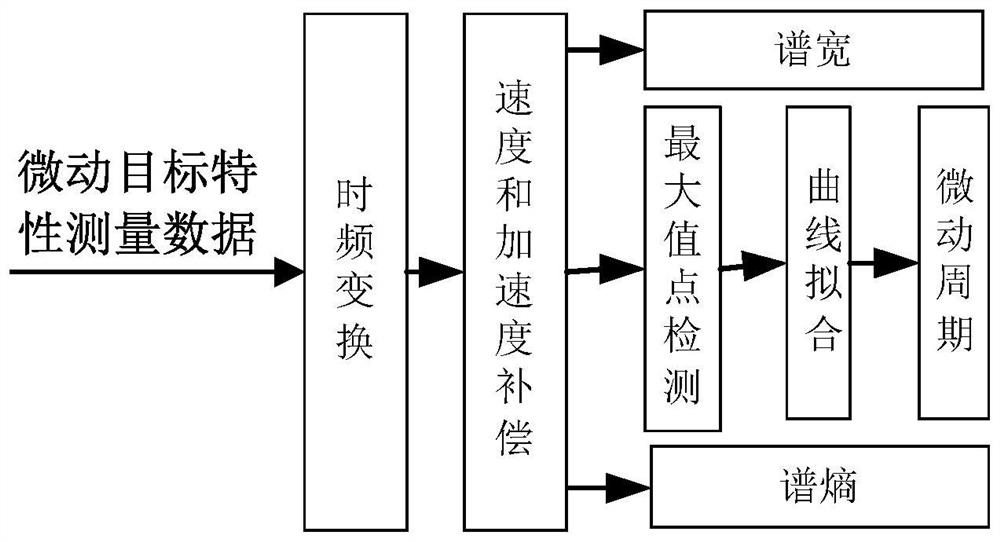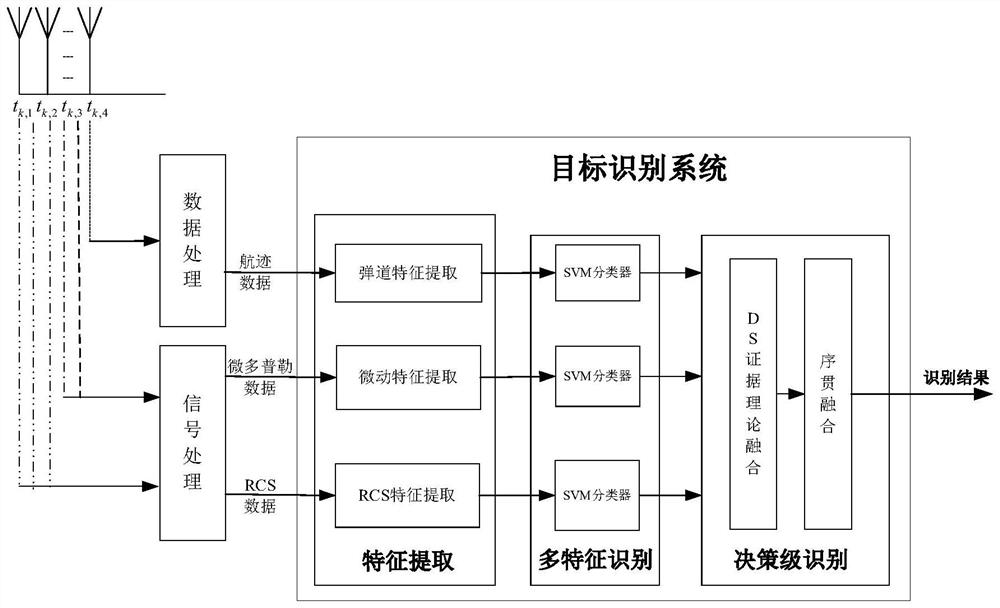Emplacement radar recognition algorithm based on decision theory
A decision-making theory and artillery radar technology, applied in the field of radar systems, can solve the problems of radar energy waste, slow recognition speed, affecting combat use, etc., to improve the recognition speed and reduce energy consumption.
- Summary
- Abstract
- Description
- Claims
- Application Information
AI Technical Summary
Problems solved by technology
Method used
Image
Examples
Embodiment Construction
[0029] Such as image 3 As shown, this embodiment discloses a gun position radar recognition algorithm based on decision theory, including the following steps; the first step is to extract effective recognition features, such as RCS features, micro-movement features of the target, etc., and the second step is based on The decision theory classifies and recognizes the extracted features and obtains the recognition results.
[0030] The feature extraction in step 1 includes ballistic feature extraction, fretting feature extraction and RCS feature extraction, specifically,
[0031] a) Trajectory feature extraction
[0032] According to the target characteristic analysis, the ballistic characteristics of the target are extracted first. The radar finds the target and starts to track it in batches. After tracking for a period of time and meeting the extrapolation conditions, it sends the ballistic extrapolation module for ballistic extrapolation, and then extracts information such...
PUM
 Login to View More
Login to View More Abstract
Description
Claims
Application Information
 Login to View More
Login to View More - R&D
- Intellectual Property
- Life Sciences
- Materials
- Tech Scout
- Unparalleled Data Quality
- Higher Quality Content
- 60% Fewer Hallucinations
Browse by: Latest US Patents, China's latest patents, Technical Efficacy Thesaurus, Application Domain, Technology Topic, Popular Technical Reports.
© 2025 PatSnap. All rights reserved.Legal|Privacy policy|Modern Slavery Act Transparency Statement|Sitemap|About US| Contact US: help@patsnap.com



